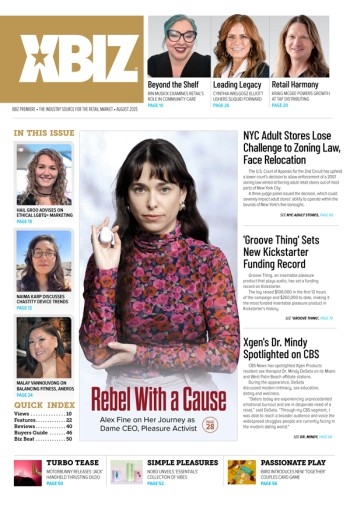One thing that all online marketers, regardless of market sector, have in common is an ongoing need for ways to attract and profit from visitors to their offers. For some website operators, it is simply a matter of buying and reselling traffic, in hopes of earning a profit — an unfortunately elusive process for many that travel down that particular path.
Fortunately, a few successful companies are willing to share their secrets.
It’s really easy to quit after bad results and financial loss, but don’t stop — analyze and retry your approach. -Axel Vézina, CrakRevenue
Generating astronomical traffic figures in the billions of visitors, CrakRevenue (www.crakrevenue.com) is a heavyweight player in the website traffic game; offering affiliates an advanced CPA platform that leverages exclusive deals using custom geo-targeted landing pages — with conversions tested and optimized over millions of hits before making its offers public. The company produces results that have earned it access to invite-only programs with higher payouts that it passes on to affiliated webmasters — a profitable concession from this top-tier program, crafted by affiliates, for affiliates.
One area that the company prides itself on is the availability of its expertise, sharing its knowledge of website traffic generation and monetization; guiding program members to promotional methods that will earn the greatest return on their traffic investment.
According to CrakRevenue traffic guru Axel Vézina, there are at least10 classic mistakes that are made by neophyte traffic buyers that are unfamiliar with the game. Vézina recently discussed some of these issues with XBIZ, developing an insightful guide that will help smooth your way to sales success.
His first bit of advice was to not try to do it alone, but to talk to an account manager.
“Before you buy any traffic, contact the company and talk to them,” Vézina stated. “Show them your products, tell them your past buying experiences (both good and bad), discuss your level of knowledge, any statistics or information about your product, and explain what kind of campaign you want to do, i.e. big or small, fast or long-term, for branding or for sales, etc… and then ask for recommendations on where you should bid first, as well as for advice on features that the ad network provides, such as capping and contextual placement, etc.”
He also warned about having unrealistic expectations of generating immediate profits from any paid traffic sources; noting that it’s easy to lose money around half of the time.
“As a huge media buyer, I can say that we can lose money on 30-40 percent of the traffic sources we buy,” Vézina confided. “The important thing is to quickly cut losing deals while renewing the winners, and to test as many sources as you can find which fit your traffic needs, because there is no such thing as cheap or magic traffic.”
The importance of testing different traffic sources is underscored on the international level, with Vézina noting that few products convert well all around the world, so it is vital to focus on specific countries, languages and locations. For example, a product targeted towards English speakers could do well in not only the U.S., but in Canada, the U.K., Australia, New Zealand and South Africa.
Lands and languages are not the only consideration, however, with viewing platform choices also taking center stage. Here, Vézina explains that web and mobile traffic is not the same and must be handled differently, saying that if you’re not used to buying traffic and your website is not fully optimized for mobile devices, then just focus on acquiring website traffic.
“Mobile is a different game and price and it is more technical, with choices for iOS, Android, WAP, 3G and more,” Vézina stated. “Tablets are more accessible, so do not mix tablets with mobile — they are not the same — and if you jump on the mobile train then be sure that your creatives, landing page and billing solutions work on targeted devices.”
Moderation is also a major factor, with Vézina advising new traffic buyers not to try to grow too big, too fast.
“If you have a $5,000 budget, it can be spent in one hour or one month, it’s up to you, but I prefer smaller and longer tests,” Vézina explained. “Smaller spots will be the best to test because you can have a decent percent of the spots. If you jump on the bigger spots at the beginning, your budget may burn too fast.”
“I would rather test 15 bid sources at $100 each for few days and then keep the best ones, raising their traffic level,” Vézina added. “Secure your profits and then start with new small bids — don’t put all of your eggs (or money) in the same basket.”
Ad tracking and statistical analysis are also vital factors that many newbies ignore, with Vézina advising that traffic buyers use trackers that include the identity of ad sources, such as ad network ID and name, along with source information such as names, the spot location, the geographical areas that were chosen, the banner and tour used, the run dates and any other pertinent info — but be careful of using special characters that can cause a problem with your other scripts — and encrypt your tracker, so that your sponsors do not pursue the best traffic sources directly, cutting you out of the revenue loop in the process.
Time, as in ad buy times and careful test timing, are also crucial.
“Because you can track earnings vs. spending, you need to plan tests and not just start them randomly, since many factors will influence the results, such as the day and time, the month, holidays, etc.” Vézina stated.
“Take a lot of notes and keep clean results of your tests,” Vézina added. “You’ll need to be able to comeback in the future to compare these test results against each other.”
This due diligence extends into understanding the features of each ad network as well as how competitors are using these features — and where their traffic is coming from — since all the big networks, such as AdXpansion, EroAdvertising, Exoclick and JuicyAds, have different traffic sources (and some even offer the same ad spots) so it is important to compare features, prices and bidding procedures, in order to maximize profitability.
“Each ad network offers different features, such as capping budgets or impressions, scheduled bidding, contextual delivery, retargeting ads, pixel tracking, etc.” Vézina stated. “So before bidding, be sure you know and understand every option you can use to help you make money.”
Never underestimate the long-tail earnings that can accrue to ad buys, either, as this is a factor that savvy buyers factor in. For example, type-in traffic from watermarked ads or marketing materials such as images or videos, can increase sales by 20-30 percent, which is a figure that Vézina includes in his revenue reports.
“Never forget that buying ads will always bring additional exposure that can lead to new clients, so if you start buying decent volumes, you will also see more type-in traffic if you use watermarks,” Vézina explains. “At some point, you have to take those sales into consideration in your revenues.”
Finally, Vézina advises new traffic buyers not to become angry or discouraged over their initial success (or lack of it) because the end results are more than worthwhile.
“It’s really easy to quit after bad results and financial loss,” Vézina concluded. “But don’t stop — analyze and retry your approach. Give your results to your account manager and discuss solutions with him or her, while talking with other webmasters and partners.”
If you follow these simple steps, you will be well on your way towards maximizing profits from paid ad placements.





